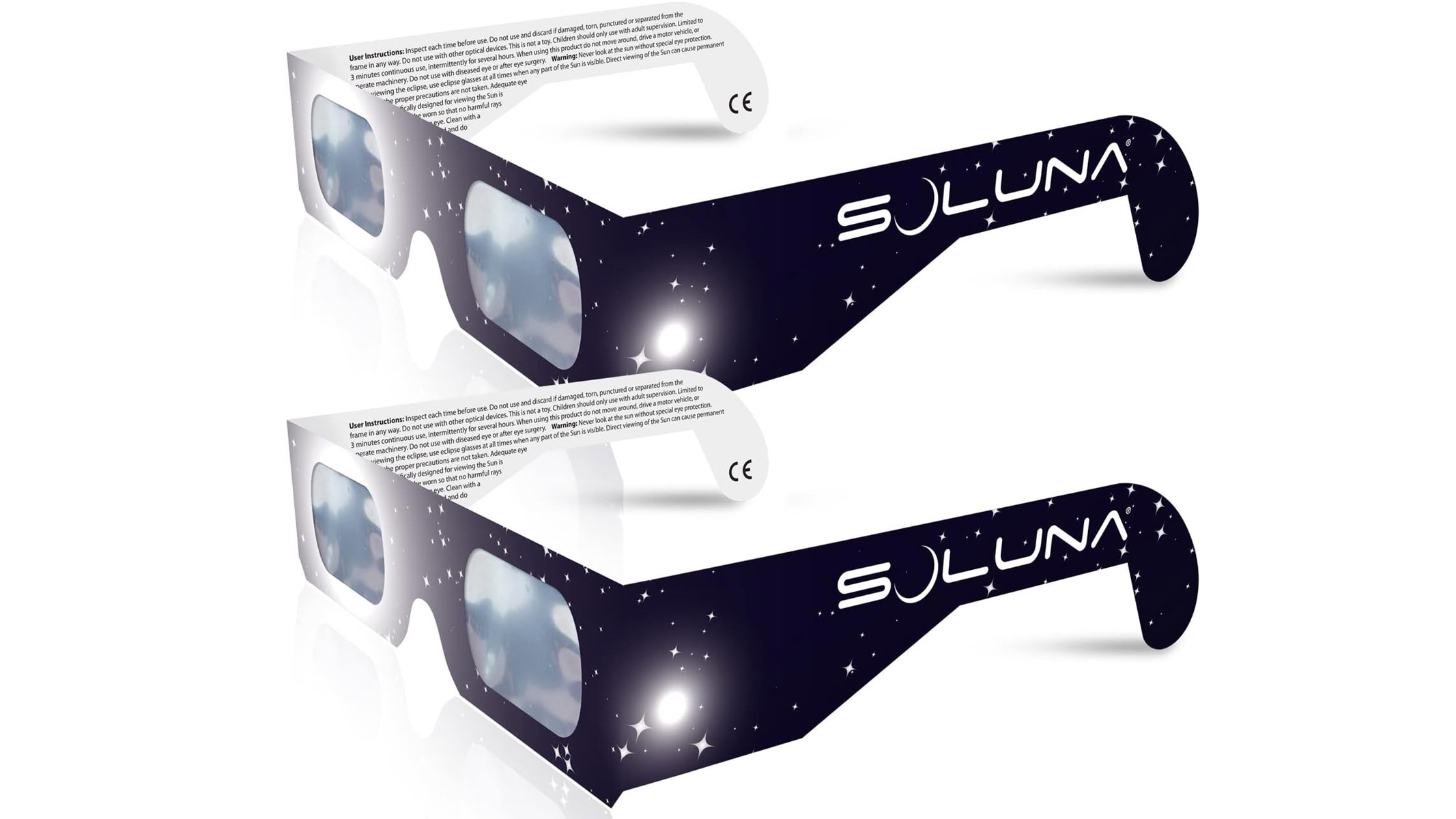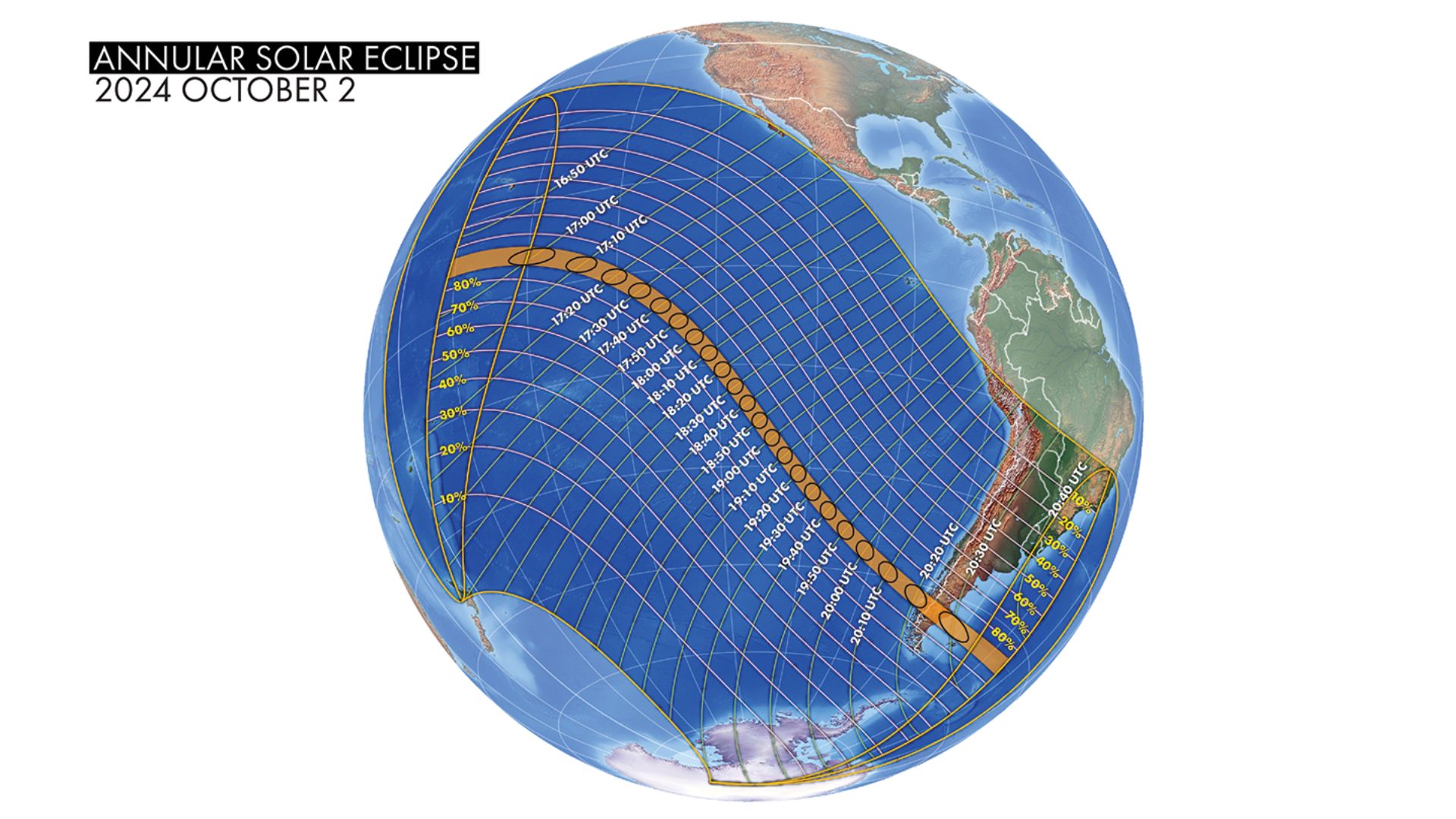How long will the annular solar eclipse on Oct. 2 last?
Here's how long the "ring of fire" phase of the annular solar eclipse will last depending on where you're viewing it from.
Update for 11:40 a.m. EDT: The "ring of fire" annular solar eclipse of Oct. 2 amazed skywatchers across the southern Pacific and South America. Read our wrap story and check out the best photos from the annular eclipse.
On Oct. 2, an annular — or "ring of fire" — solar eclipse will be visible from parts of the southern Pacific Ocean, Easter Island, southern Chile and Argentina, and the southern Atlantic Ocean. Central and southern South America, as well as Antarctica, will see at least partial phases.
How long the event's annular portion lasts depends on where you are both along and within the path of annularity. Below, we highlight key times and durations. If you're unable to view the eclipse in person you can keep up with all the solar eclipse action with our solar eclipse live blog and watch the eclipse live courtesy of TimeandDate.
Remember, during an annular solar eclipse, it is NEVER safe to look directly at the sun without solar eclipse glasses designed for solar viewing. Read our guide on how to observe the sun safely.
Annularity across South America

If you want to be ready for the next solar eclipse, or safely observe the sun, you'll need proper solar eclipse glasses. This 5-pack of Soluna ISO Certified Safe solar eclipse glasses is on sale for $9.99, that's 60% off, at Amazon.
Annularity — when the ring of fire is visible — will start at 16:50 UTC (12:50 p.m. EDT) and end at 20:39 UTC (4:39 p.m. EDT), for a sum of 3 hours, 48 minutes and 40 seconds. This is the effect of the moon's umbra — its dark central shadow — which will create a roughly 165-mile-wide (266 kilometers) path of annularity that will track diagonally across the planet.
Duration of annularity
- Maximum annularity on Easter Island: 6 minutes, 12 seconds (87% of the sun covered)
- Maximum annularity in Chile: 6 minutes, 11 seconds (85.6% of the sun covered)
- Maximum annularity in Argentina: 6 minutes, 18 seconds (85.6% of the sun covered)
Earth is roughly spherical, and so is the moon. When the moon's shadow strikes Earth, it does so obliquely as a stretched oval, becomes more circular at the point of greatest eclipse, and then stretches again.
Breaking space news, the latest updates on rocket launches, skywatching events and more!
You have to be in the path of the moon's "antumbra" shadow — from where the moon will appear entirely within the sun's disk — to see the ring of fire. Your experience depends on where along the path you are located and how close you are to its centerline. The closer you are to the centerline, the longer the ring of fire will be visible.
Maximum annularity at sunrise
As the eclipse begins at sunrise south of Hawaii in the Pacific Ocean around 5:43 a.m. local time (11:43 a.m. EDT or 1543 GMT), the moon's shadow will be at its farthest — and thus its widest — from Earth. The path of annularity — the width of the moon's shadow — will be 206 miles (332 km) when it first appears on Earth. Here, the ring of fire will last 5 minutes, 34 seconds.
Point of greatest eclipse
About 3 hours and 4,400 miles (7,100 km) later is the point of the greatest eclipse, where annularity will last 7 minutes, 25 seconds beginning around 10:45 a.m. local time (2:45 p.m. EDT or 18:45 GMT) over the empty ocean.
At this point, the moon will be as close to Earth as it will get during the eclipse and where the centers of the moon, Earth and the sun are perfectly aligned. Here, the path of annularity will be 165 miles wide — the narrowest it will get during the solar eclipse.
Maximum annularity at sunset
As the "ring of fire" phase of the eclipse ends at sunset in the southern Atlantic Ocean at 5:39 p.m. local time (4:39 p.m. EDT or 20:39 UTC ), the moon's shadow will again be as far from the moon as it will get. The path of annularity here will be 206 miles (332 km) wide when it last appears on Earth. This final view of the ring of fire will last 5 minutes, 41 seconds.

Jamie is an experienced science, technology and travel journalist and stargazer who writes about exploring the night sky, solar and lunar eclipses, moon-gazing, astro-travel, astronomy and space exploration. He is the editor of WhenIsTheNextEclipse.com and author of A Stargazing Program For Beginners, and is a senior contributor at Forbes. His special skill is turning tech-babble into plain English.

